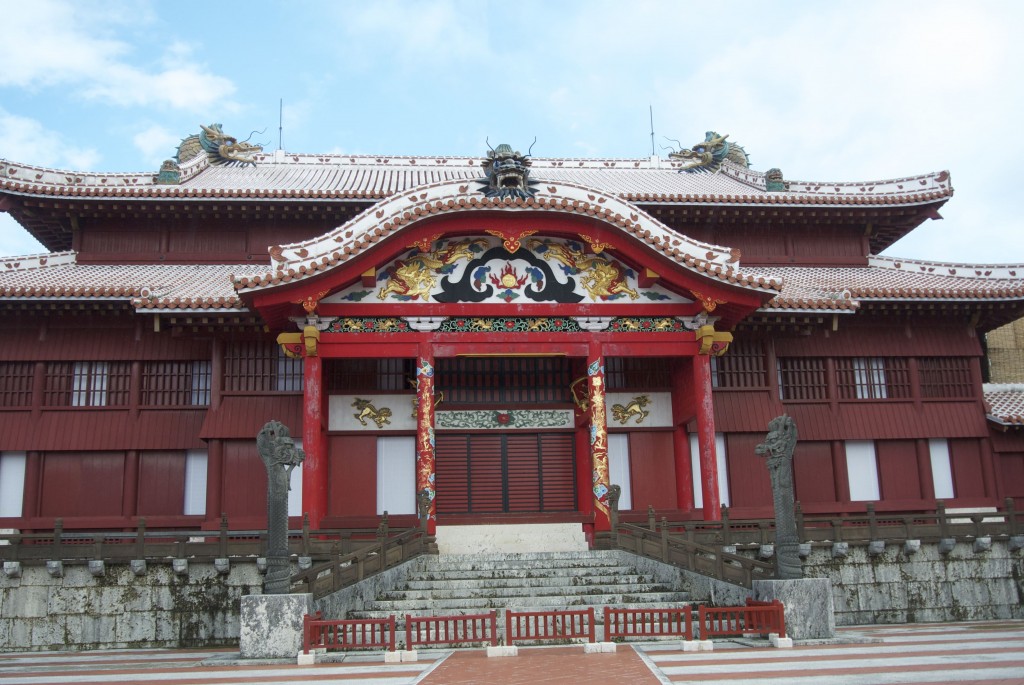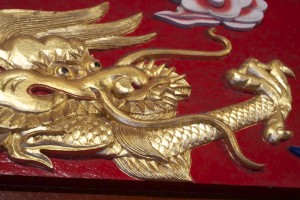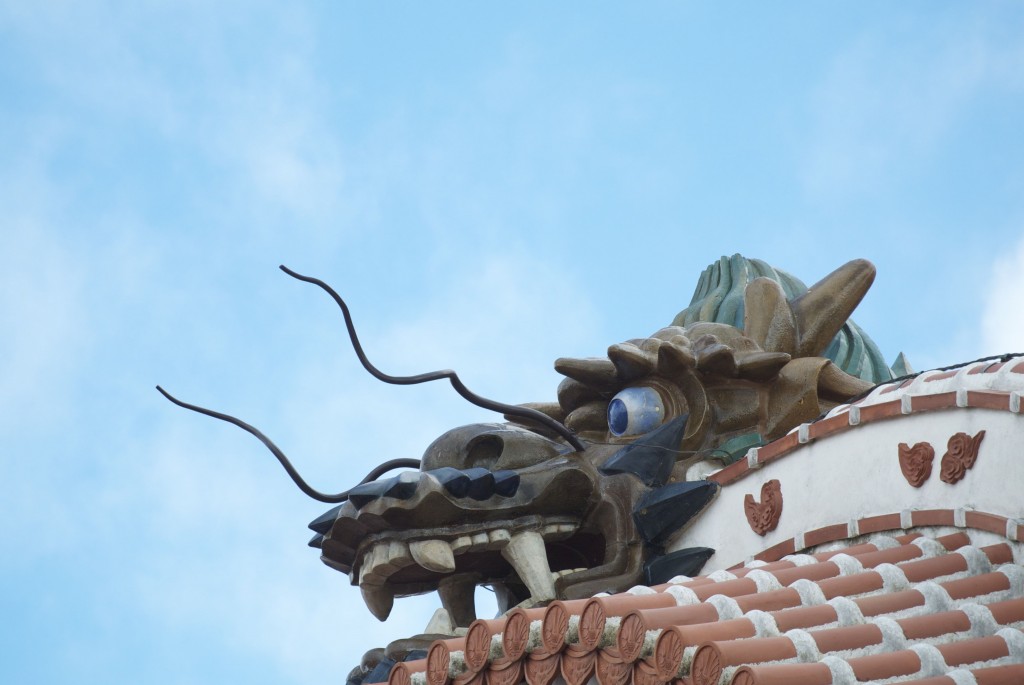
Shuri Castle in Naha City, former seat of the Ryukyu king and guarded by two vertical dragon figures on either sie of the entrance steps, with dragons painted on the pillars and dragon heads on the roof. The palace was restored in 1992; the remains of the original palace are listed as a World Heritage Site.
Okinawa is special. It’s got a subtropical climate, its own distinctive culture, and the longest living people in the world. The hundreds of islands in the archipelago stretch for over 1000 kilometers, as if a bridge to Taiwan.
For long Okinawa was independent of Japan, with its own kingdom, language and religion. In 1609 it was invaded by the Satsuma domain of southern Kyushu and made a tributary state. Then in 1879 it became a formal part of Japan, comprising its southernmost prefecture.

Dragon detail from the interior decor
In WW2 the prefecture suffered terribly in the fighting, and a quarter of the population perished. Until 1972 it was administered by the US, then reverted back to Japan. Still today US bases occupy 18% of the main island.
In the past the country was associated with the dragon, and the king adopted it as his symbol. It was a symbol of sea power, and Shuri Castle is covered in dragon decorations, many of which are in A-Un pairs (one with mouth open, and one with mouth shut, to signify yin-yang polarity). With regard to the dragon connection, Mark Schumacher has this to say on his website about Japanese religions…
In Japanese mythology, the Dragon King’s Palace (Ryūgu) is said to be located at the bottom of the sea, near the Ryukyu Islands (Okinawa), and it belongs to Ryūjin, the Japanese name for the dragon king. The palace is also known as the “Evergreen Land.” In his book Japanese Poetry, Professor B. H. Chamberlain says the Japanese word for Dragon Palace (Ryūgū) is likewise the Japanese pronunciation of the southernmost Ryūkū islands. He writes about one ode in the Man’yōshū (Japan’s oldest anthology of verse compiled in the 8th century), which says the orange was first brought to Japan from the “Evergreen Land” lying to the south. The many-storied palace is built from red and white coral, guarded by dragons, and full of treasure.
The castle is the most famous of the nine properties belonging to the World Heritage Site known officially as “Gusuku Sites and Related Properties of the Kingdom of Ryukyu”. The Ryukyu kingdom existed from the 15th to 19th centuries, and gusuku is the Okinawan word for castle, of which there are five altogether in the World Heritage registration if one includes Shuri Palace. The other sites consist of a royal garden and mausoleum, as well as a sacred gate and the country’s chief religious centre. For the past week I’ve been visiting the sites and learning something about the religious practices of the past (and present). More of which anon….

Dragon head on the roof of the palace

The area around Shuri Castle is also the birthplace of Karate.